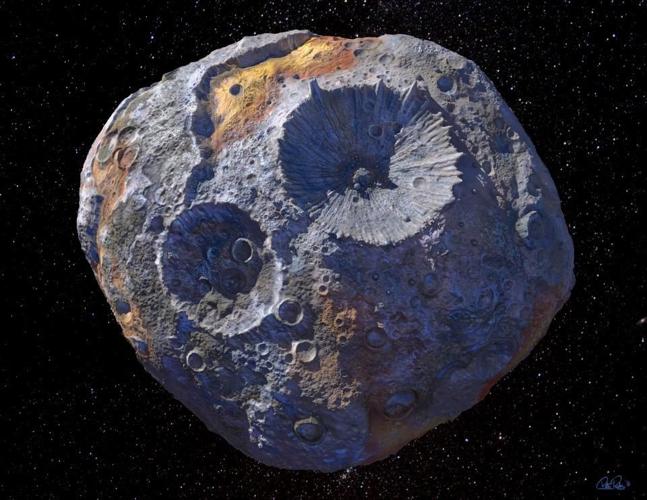A NASA mission to metallic asteroid Psyche, run by a team at Arizona State University, has selected a new trajectory that will get it to its target four years earlier.
For Lindy Elkins-Tanton, principal investigator for the mission and head of ASU’s School of Earth and Space Exploration, that means all her deadlines for launch preparation have been shortened by a year.
The NASA Discovery mission, selected for launch in 2023, will now launch in summer 2022. It will arrive at Psyche in 2026, instead of 2030.
“The joke among the team is that now we’ll still be alive when we get there — 2030 just seemed so far away,” said Elkins-Tanton in a telephone interview.
She said the team can easily meet the new launch deadline. She had originally based her proposal on a 2021 launch date.
The mission’s cost, capped at $450 million, will decrease with the shorter timetable, she said, saving taxpayers about $100 million and making more efficient use of the “army” of scientists and engineers assembled for the mission.
“Even during cruise, you’ve got a standing army and a lot of maintenance and watching to do,” she said.
She said NASA officials had asked her to see if there was some way to short-cut the time and distance.
Gregory Whiffen, principal engineer at NASA Jet Propulsion Laboratory, found what Elkins-Tanton called a “miracle trajectory” that cuts out a looping gravity assist from the Earth.
It retains a gravity assist from Mars to propel it toward Psyche, which lies in the main asteroid belt between the orbits of Mars and Jupiter.
The new path stays farther from the sun and reduces the need for additional shielding, according to a NASA press release.
Based on radar observations, Psyche is believed to be almost totally metallic, with an iron-nickel surface.
The team’s working hypothesis is that it’s the core of a small planet whose rocky crust and mantle were stripped away in a series of collisions during the formation of our solar system.
Elkins-Tanton said the number of collisions needed to make that happen makes that “leading hypothesis” improbable, but it’s the best explanation so far.
Observations made recently by NASA’s Hubble Space Telescope might provide more clues, she said, but the first close look at the asteroid will come in 2026.
“I’m hoping for a giant surprise,” she said.





